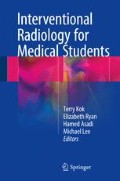Abstract
-
Ten percent of acute ischemic strokes (AIS) are due to severe carotid artery stenosis, making carotid revascularization one of the most important therapeutic managements in ischemic stroke.
-
Older guidelines had reserved carotid artery stenting (CAS) for severe stenosis in symptomatic patients considered high risk for carotid endarterectomy (CEA).
-
These guidelines were based on multiple previous trials including the North American Symptomatic Carotid Endarterectomy Trial (NASCET) and European Carotid Surgery Trial (ECST) that provided evidence of the superiority of CEA as the best medical therapy for symptomatic patients.
-
However, the recent long-term results from the Carotid Revascularization Endarterectomy Versus Stenting Trial (CREST), with over 10-years comprehensive follow-up, did not find a significant difference between patients who underwent stenting versus those who underwent endarterectomy with respect to the risk of peri-procedural stroke, myocardial infarction, or death, as well as subsequent ipsilateral stroke. Also, the rate of post-procedural ipsilateral stroke also did not differ between the two groups.
-
This equipoise likely benefitted from increasing refinement in CAS device technology and improving techniques over the past decade.
-
The jury is still out for asymptomatic patients, as the current evidence for this group of patients, based on Asymptomatic Carotid Atherosclerosis Study (ACAS) and the Asymptomatic Carotid Surgery Trial (ACST), is of CEA superiority in patients with more than 60% carotid stenosis, with approximately 5.5% reduction in 5-year stroke risk over CAS.
-
The most important question about patients with asymptomatic significant carotid stenosis, recently defined as more than 70%, is whether medical treatment alone is sufficient or inferior to combined medical therapy and surgical intervention, and if inferior whether there is equipoise between CAS and CEA.
-
This is the question that the CREST-2 study is trying to answer by 2020.
Access this chapter
Tax calculation will be finalised at checkout
Purchases are for personal use only
Suggested Reading
Barnett HJ, Taylor DW, Eliasziw M, Fox AJ, Ferguson GG, Haynes RB, et al. Benefit of carotid endarterectomy in patients with symptomatic moderate or severe stenosis. N Engl J Med. 1998;339(20):1415–25.
Brott TG, Halperin JL, Abbara S, Bacharach JM, Barr JD, Bush RL, et al. 2011 ASA/ACCF/AHA/AANN/AANS/ACR/ASNR/CNS/SAIP/SCAI/SIR/SNIS/SVM/SVS guideline on the management of patients with extracranial carotid and vertebral artery disease: a report of the American College of Cardiology Foundation/American Heart Association task force on practice guidelines, and the American Stroke Association, American Association of Neuroscience Nurses, American Association of Neurological Surgeons, American College of Radiology, American Society of Neuroradiology, Congress of Neurological Surgeons, Society of Atherosclerosis Imaging and Prevention, Society for Cardiovascular Angiography and Interventions, Society of Interventional Radiology, Society of NeuroInterventional Surgery, Society for Vascular Medicine, and Society for Vascular Surgery Developed in collaboration with the American Academy of Neurology and Society of Cardiovascular Computed Tomography. J Am Coll Cardiol. 2011;57(8):e16–94.
Brott TG, Howard G, Roubin GS, Meschia JF, Mackey A, Brooks W, et al. Long-term results of stenting versus endarterectomy for carotid-artery stenosis. N Engl J Med. 2016;374(11):1021–31.
Collaborators NASCET. Beneficial effect of carotid endarterectomy in symptomatic patients with high-grade carotid stenosis. N Engl J Med. 1991;325(7):445–53.
Enomoto Y, Yoshimura S. Antiplatelet therapy for carotid artery stenting. Interve Neurol. 2013;1(3–4):151–63.
Garg N, Karagiorgos N, Pisimisis GT, Sohal DP, Longo GM, Johanning JM, et al. Cerebral protection devices reduce periprocedural strokes during carotid angioplasty and stenting: a systematic review of the current literature. J Endovasc Ther. 2009;16(4):412–27.
Group MACSTC. Prevention of disabling and fatal strokes by successful carotid endarterectomy in patients without recent neurological symptoms: randomised controlled trial. Lancet. 2004;363(9420):1491–502.
Hobson RW, Howard VJ, Brott TG, Howard G, Roubin GS, Ferguson R. Organizing the carotid revascularization endarterectomy versus stenting trial (crest): national institutes of health, health care financing administration, and industry funding. Curr Control Trials Cardiovasc Med. 2001;2(4):160–4.
Hopkins LN, Roubin GS, Chakhtoura EY, Gray WA, Ferguson RD, Katzen BT, et al. The carotid revascularization endarterectomy versus stenting trial: credentialing of interventionalists and final results of lead-in phase. J Stroke Cerebrovasc Dis. 2010;19(2):153–62.
Investigators A. Endarterectomy for asymptomatic carotid artery stenosis. Executive Committee for the Asymptomatic Carotid Atherosclerosis Study. JAMA. 1995;273(18):1421–8.
Lal B, Meschia J, Brott T. CREST-2: guiding treatments for asymptomatic carotid disease. Endovascular Today. 2013:73–6.
Lam RC, Lin SC, DeRubertis B, Hynecek R, Kent KC, Faries PL. The impact of increasing age on anatomic factors affecting carotid angioplasty and stenting. J Vasc Surg. 2007;45(5):875–80.
Lloyd-Jones D, Adams RJ, Brown TM, Carnethon M, Dai S, De Simone G, et al. Heart disease and stroke statistics—2010 update a report from the American Heart Association. Circulation. 2010;121(7):e46–e215.
Macdonald S, Lee R, Williams R, Stansby G. Towards safer carotid artery stenting a scoring system for anatomic suitability. Stroke. 2009;40(5):1698–703.
Vogel TR, Dombrovskiy V. Carotid artery stenting in the nation: the influence of hospital and physician volume on outcomes. Vasc Endovasc Surg. 2009;45(2):205.
Author information
Authors and Affiliations
Corresponding author
Editor information
Editors and Affiliations
Rights and permissions
Copyright information
© 2018 Springer International Publishing AG
About this chapter
Cite this chapter
Asadi, H. (2018). Carotid Angioplasty and Stenting (CAS). In: Kok, H., Ryan, E., Asadi, H., Lee, M. (eds) Interventional Radiology for Medical Students. Springer, Cham. https://doi.org/10.1007/978-3-319-53853-2_21
Download citation
DOI: https://doi.org/10.1007/978-3-319-53853-2_21
Published:
Publisher Name: Springer, Cham
Print ISBN: 978-3-319-53852-5
Online ISBN: 978-3-319-53853-2
eBook Packages: MedicineMedicine (R0)

